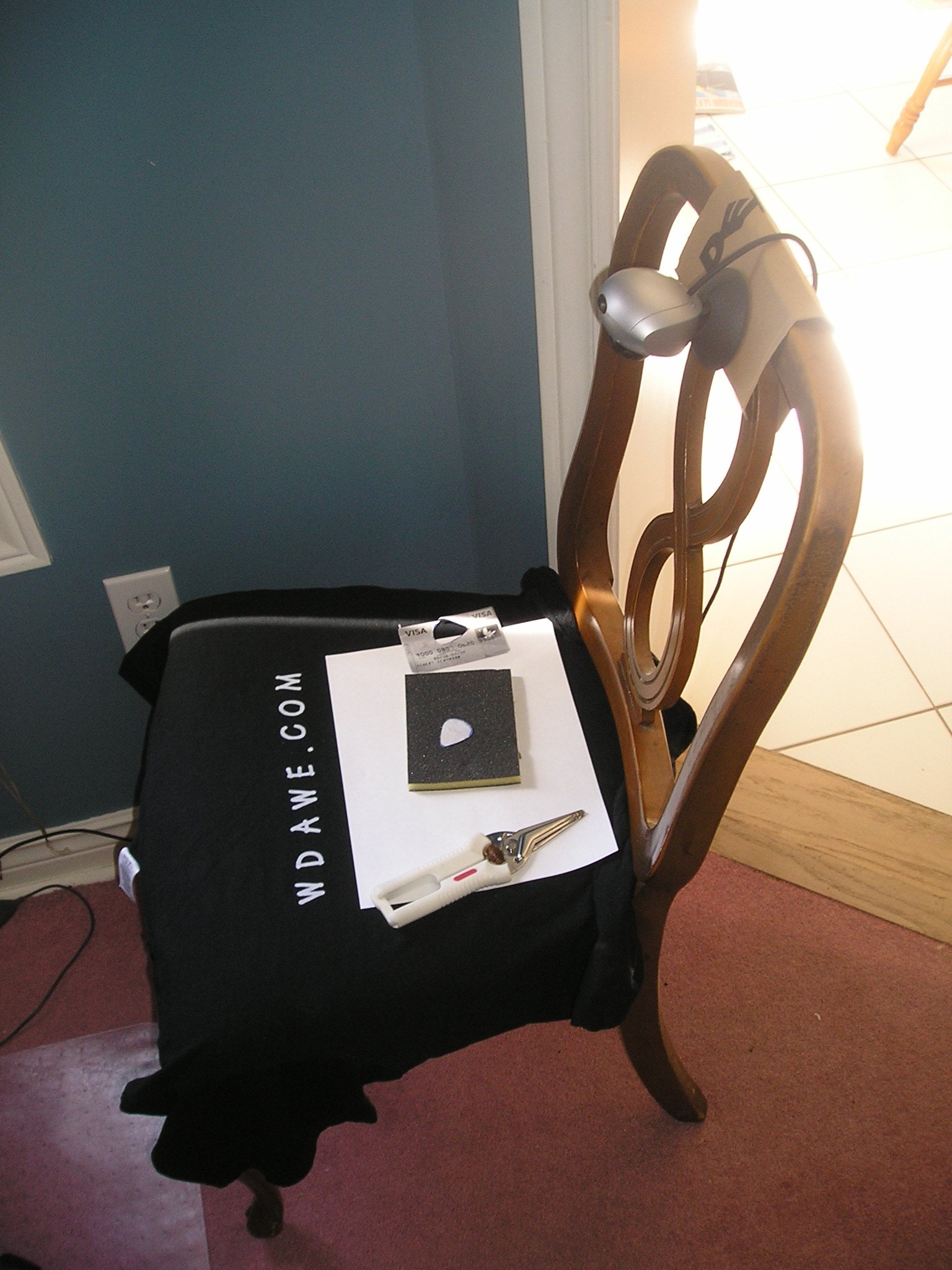| « Updating Yahoo Messenger on the EEEPC | Opera mini 5 beta, the browser your Blackberry has been waiting for » |
Making a guitar pick from a credit card is easier than making a video about it
09/21/09
The manager of the How to make a guitar pick from a credit card page at Mahalo.com decided that he would create a contest and offer a $10 prize for a video on how to make a guitar pick out of a credit card. I was hanging around the house and decided I would take a shot at it.
Here is the end result.
Making video is time consuming and hard work. I didn't have a tripod or any video lights at home so I rigged up a small set out of one of my dining room chairs. I decided that I'd shoot near the window to use the natural light to make up for the lack of proper lights. I usually shoot video downstairs which means I also had to hunt around and find the drivers and the capture software for my webcam and install it on the upstairs computer which was near the window. After the requires software was installed it took a bit of fiddling along with a piece of cardboard and some packaging tape to get the camera arranged and set up my backdrop. Here is a picture of my final set up.

I decided that I'd skip writing a script and move straight to recording. In my previous videos I've recorded straight through, doing multiple takes until I get one I like and not edit afterward. This means that I usually have to do 8-10 takes because of my verbal bobbles. These double as technical rehearsals and for this video I made it all the way through on the third try. When I played it back on the computer I recorded it on, disaster. The audio was about 2 seconds behind the video. I was using a windows machine so I downloaded avidemux a simple, cross platform video editing tool. I've never used Avidemux and after fiddling around with for a while I still wasn't happy with the results. I decided to bite the bullet, pull out the big guns and install Cinelerra. Cinelerra is a full featured non linear video editing tool for Linux. After I got Cinelerra installed I was unsuccessful getting it to import the video which was in wmv format. The version of Cinelerra that is available from the Centos repositories is not the latest version and I don't think it has all the latest import options. After fiddling around with it for too long, sometimes getting video and sometimes audio I finally came up with the proper incantation to pass to ffmpeg to get a file that Cinelerra was happy with. For anyone else who is having this problem here it is.
/usr/bin/ffmpeg -i pick_from_credit_card.wmv -f mpeg -s 640x480 -b 1200k -ar 44100 -qmax 2 pick_from_credit_card.mpg
After I successfully imported the video I begain climbing up the substantial learning curve for Cinelerra. I quickly realized that when played on my Linux machine there wasn't any mis-synchronization between the audio and the video but the video recording software had cut off the first couple of seconds of the recording. This made the fact that I had repeated "you need" a number of times when listing the required material list more obvious, at least to my ear. I had bobbled one statement near the end of the video. It was too late in the day to rerecord so I decided to fix the audio in Cinelerra. I quickly realized that inserting silence wasn't useful for masking the repetitive "You need"'s and had to learn how to copy the background noise instead.
Things I should have done to make the video better.
- Do a script, the time I spent on editing the sound would have been eliminated if I had written a script
- Shoot a second take, I could have used it to fix the place where my hands move out of frame.
- Watch the audio levels, they were cranked up too high and audio clips at some points probably because I was using the camera's built in microphone.
- Process the audio to remove the background noise.
- Use a tripod, it would have made setting things up so much easier.
When I heard Tyler Crowley from Mahalo.com speak earlier this year at Mesh 09 his point was that you can make good looking videos on the cheap. I think I've succeeded especially when compared to some of the other videos I've seen on Youtube.
3 comments
I thought the video came out pretty good but found it lacking a little bit in the lighting department. Looked a bit dark. That’s my Achilles heel when making videos of my own…lighting.
Enjoy the blog.
Holly
Guitar learning software is tailor-made for beginners. Its comprehensive approach to learning optimizes the learning potential of every user. The teaching methods that people get from the software are very much similar to those used in traditional classes. The only difference is that the supplemental videos replace the presence of an actual instructor. In effect, people get a one-to-one instruction ratio. In this light, learning from the software is very much like enjoying the teachings of a real instructor.
How resourceful of you! If there’s a will, there’s a way! Good for you for taking on the challenge of creating a video for this contest. Nice job!
